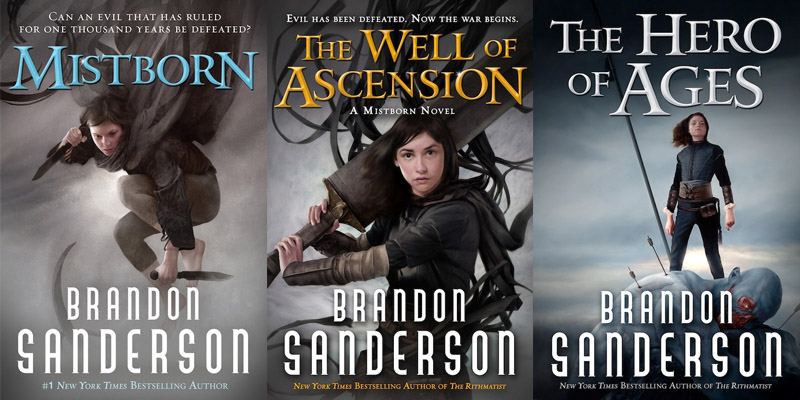![]() While I was working with Brandon Sanders at Salt Lake Comic Con a couple years ago, a fan asked him what his favorite book was.
While I was working with Brandon Sanders at Salt Lake Comic Con a couple years ago, a fan asked him what his favorite book was.
“Les Miserables,” he shot back without hesitation.
Mine too. I read the book in high school a couple times and a couple times since. Victor Hugo was a genius.
Now I had heard of Brandon Sanderson, but admittedly had never read any of his stories, but that comment drew me to his work.
I started with the Stormlight Archive then moved to the Reckoners series. And then, while going through Stormlight withdrawals I delved into Mistborn.
The story takes place in a fantasy world with a unique magic system. I like fantasy.
The curtains open on this fantasy stage to a criminal outfit running a con. Now, I like fantasy, but I love cons and heists. I’m hooked.
Soon this becomes less about conning the nobility and more about fueling revolution. I start to notice the intertwined reference to a significant piece of history—the French Revolution. I love history. And coincidently this event also surrounds the story in Les Miserables.
There’s more. Religious philosophy and political rhetoric mixed along with military stratagem. It’s a fascinating read. What Sanderson does so beautifully in Mistborn is to combine elements of seemingly different genres to tell an incredible story. Think Oceans Eleven mixed with A Tale of Two Cities and throw in some Robert Jordan. And it works perfectly.
art credit Marc Simonetti
 I live in Arizona with my family, wife and five kids and a little dog. I write fiction, thrillers and soft sci-fi with a little short horror on the side. I’ve hold an MBA and work in finance for a biotechnology firm.
I live in Arizona with my family, wife and five kids and a little dog. I write fiction, thrillers and soft sci-fi with a little short horror on the side. I’ve hold an MBA and work in finance for a biotechnology firm.
I volunteer with the Boy Scouts, play and write music, and enjoy everything outdoors. I’m also a novice photographer.
You can read some of my works by visiting my Wattpad page and learn more at www.jacekillan.com.





